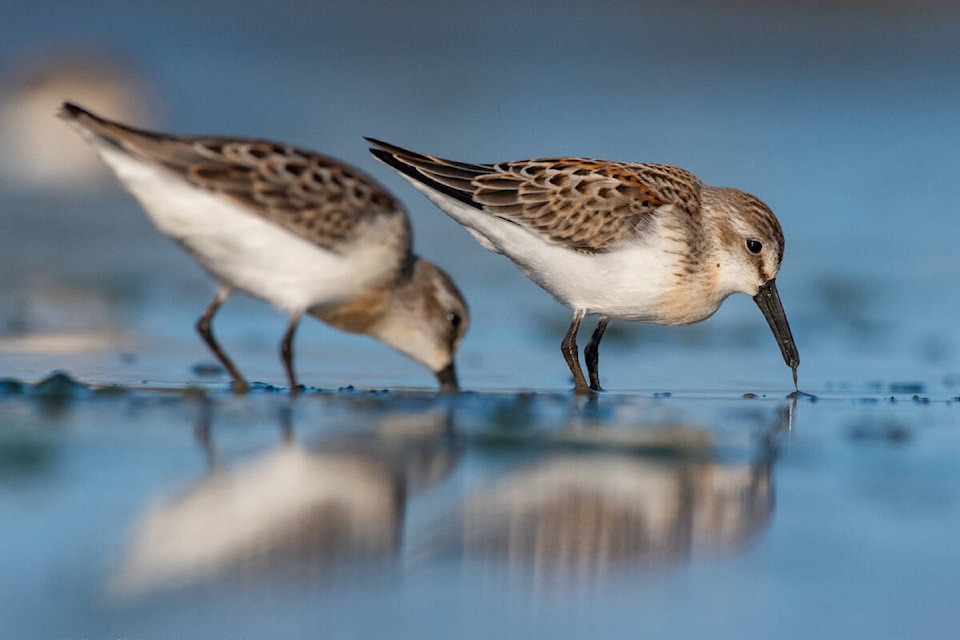By James MacKenzie
Special to Black Press
Oh mudflats: the birds love you dearly and therefore, I do too.
I love your sickly stench, your eau du wretch, your toxic tang. I love the way you try to steal my shoes, sinking slowly as I stop to peer through my binoculars. I love the way you never let me forget you, like when a colleague or family member asks: “what’s that smell?” But enough about me, let’s talk about the birds.
Why do migrating birds love mudflats so much, and why are they so important?
Well first of all, we should define which group of birds rely on mudflats the most: shorebirds. Comprising species of sandpipers, plovers, turnstones and more, shorebirds are familiar to most. The majority breed in the far northern tundra and migrate thousands of kilometres each year to winter along beaches from Vancouver Island to the southern tip of Chile. To complete these mind-boggling journeys each year, flocks of tiny shorebirds touch down at mudflats to fuel up. But what are they eating?
Only recently, we discovered that over 50 per cent of migrating shorebirds’ diets is made up of biofilm, a thin aggregation of bacteria and other organic material that is commonly seen as plaque on your teeth or slime on pond rocks. On mudflats however, biofilm is presented to the birds as a true buffet and contains a rich assortment of fatty acids, omega-3s, and other lipids. These complex nutrients give birds like the western sandpiper, who weigh about the same as a single AA battery, enough fuel to journey from Alaska to beaches beyond.
When shorebirds make stops locally, they do so in Comox Bay, Oyster Bay, and other estuarine mudflats. When they encounter off-leash dogs, they must waste more valuable energy escaping a predator than resting and refuelling. Now that you know the might and the plight of these tiny shorebirds, consider keeping your dog on leash and stopping them from chasing and disturbing wildlife. We need to give birds all the breaks we can.
James MacKenzie is the Mountainaire Avian Rescue Society (MARS) Wildlife Rescue education and volunteer co-ordinator
